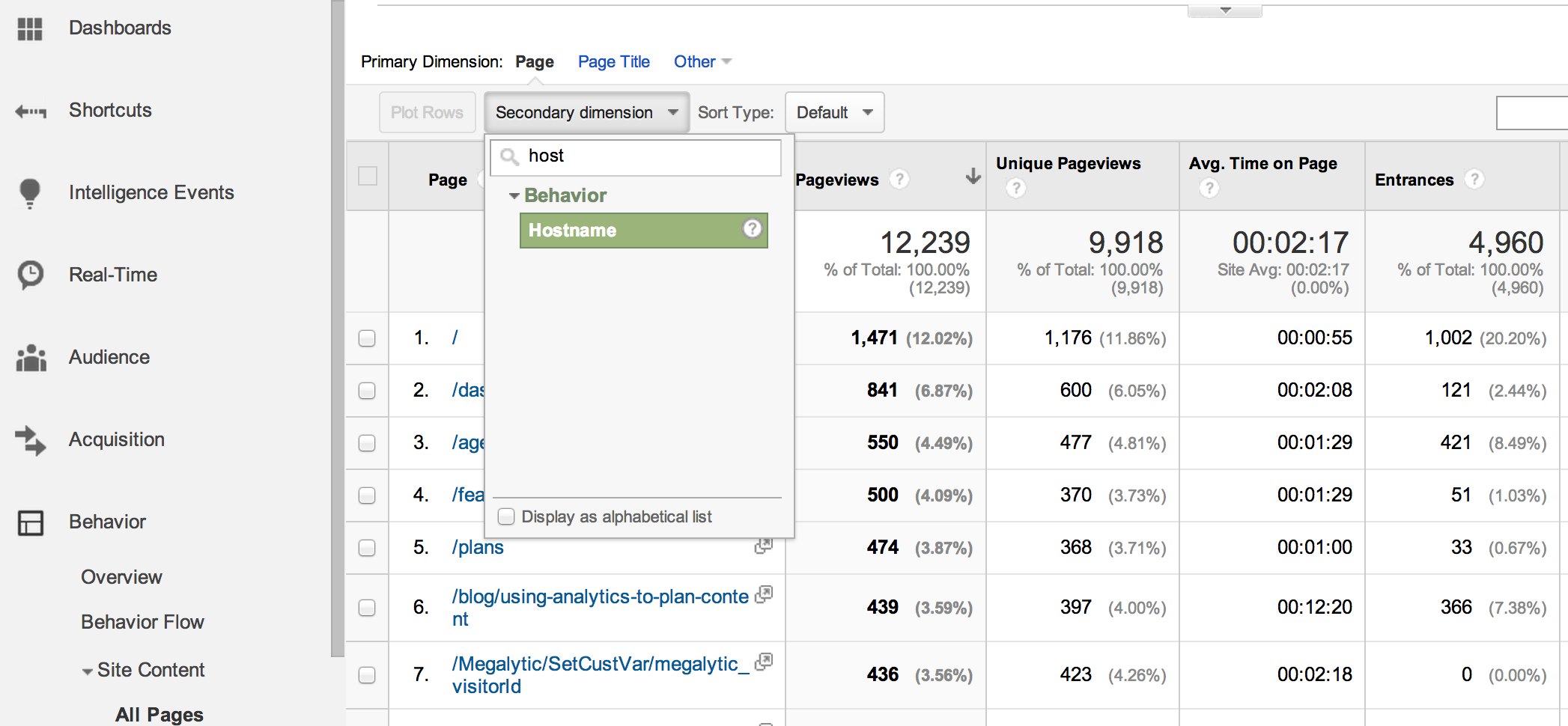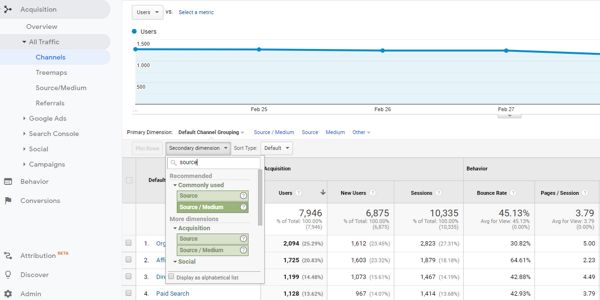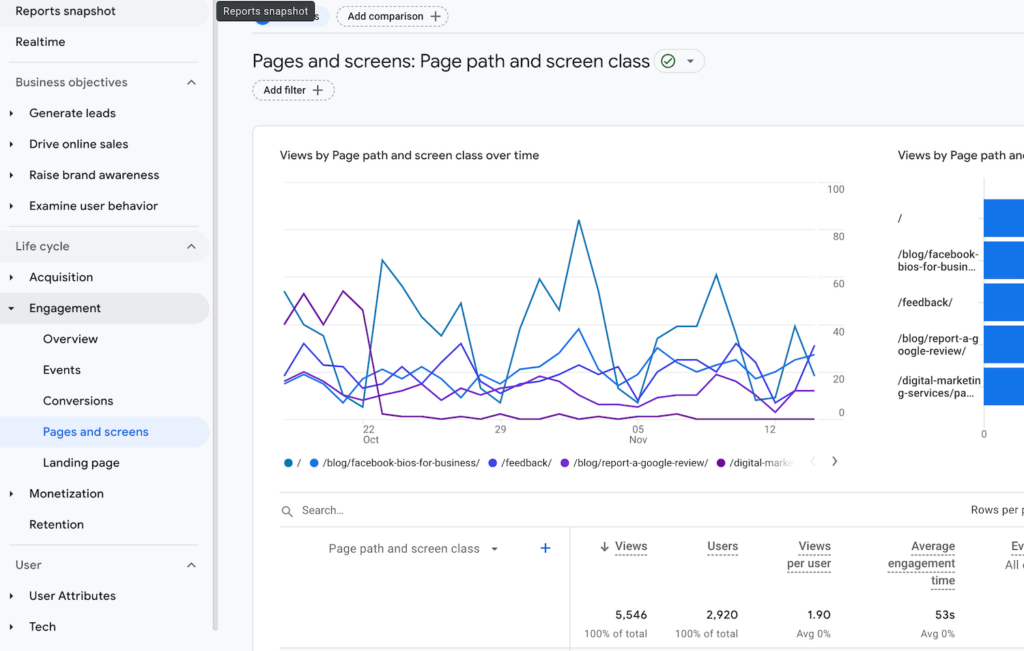Decoding the Relevance of Additional Measurement in Google Analytics: Everything About Its Significance and Influence
In the world of electronic analytics, the usage of additional measurements within Google Analytics acts as a pivotal tool for discerning deeper layers of information understandings. The significance of additional measurements depends on their capability to give a nuanced sight of user actions and communication with an internet site or platform. By studying information beyond surface-level metrics, organizations can open a wide range of info that refines and forms strategic decisions advertising initiatives. This exploration into the realm of additional dimensions not only offers a comprehensive understanding of individual interaction yet likewise clarifies the intricate characteristics that drive on-line performance.
Understanding Additional Dimensions in Google Analytics
The understanding of second measurements in Google Analytics is vital for getting much deeper understandings right into user habits and site performance. While key measurements provide basic data points such as traffic sources and page views, secondary measurements enable a much more nuanced analysis by providing extra context to these primary metrics. By incorporating additional measurements, users can sector and filter their data to uncover patterns and patterns that may not be promptly noticeable.

Revealing the Perks of Second Dimensions
Building upon the fundamental understanding of secondary measurements in Google Analytics, discovering the benefits they use exposes very useful understandings for improving data analysis and decision-making. By integrating second measurements, users can delve much deeper into their data, getting a more detailed sight of user habits, content performance, and other key metrics. One of the key advantages is the capacity to sector data, permitting for a more granular analysis of numerous measurements such as web traffic resources, devices, demographics, and much more. This division allows individuals to recognize patterns, fads, and correlations that may not appear when looking at data in aggregate.
Furthermore, second dimensions supply context to primary information, providing additional layers of details that can assist in recognizing customer communications and choices. This enhanced understanding can lead calculated decision-making, resulting in even more targeted advertising projects, internet site optimizations, and overall improved efficiency. Basically, secondary dimensions function as an effective tool for unlocking much deeper insights and maximizing the utility of Google Analytics for organizations and web site owners.
Leveraging Secondary Dimensions for Enhanced Insights
By taking advantage of the power of additional dimensions in Google Analytics, businesses can reveal much deeper insights that drive educated decision-making and tactical optimization efforts. Leveraging secondary measurements permits companies to dig beyond surface-level information and gain an extra extensive understanding of customer behavior, target market demographics, web traffic resources, and web site efficiency. As an example, by combining key measurements like web traffic resources with second dimensions such as geographical location or tool classification, services can identify which areas or gadgets are driving the most important website traffic to their internet site.
Moreover, second dimensions allow organizations to segment and evaluate data better, assisting them identify patterns, patterns, and opportunities that may have otherwise gone unnoticed. By using additional dimensions, organizations can tailor their marketing approaches, web content, and customer experience to much better satisfy the requirements and preferences of their target audience. In significance, leveraging additional measurements in Google Analytics encourages companies to make data-driven decisions that result in enhanced efficiency, increased ROI, and lasting development.

Influence of Second Dimensions on Data Analysis
Enhancing data analysis via the use of secondary dimensions in Google Analytics provides companies with a much deeper understanding of their online performance metrics. By including second measurements, such as time of day, geographical location, or device category, services can discover valuable insights that may have been overlooked with main dimensions alone. This improved level of granularity enables even more accurate segmentation of data, enabling organizations to determine patterns, trends, and relationships that can drive calculated decision-making.

Taking Full Advantage Of Possible: Second Dimensions Approaches
The strategic application of additional dimensions in Google Analytics expands past enhancing data analysis; it involves crafting targeted strategies to open the complete capacity of useful understandings for company development. By utilizing secondary measurements successfully, organizations can dig much deeper into their website traffic, user actions, and advertising projects to draw out actionable insights. One vital approach is to incorporate additional dimensions with key measurements to get an extensive sight of user interactions. For example, coupling the primary dimension of 'source/medium' with second measurements like 'touchdown page' or 'tool classification' can reveal which networks are driving web traffic to specific pages or exactly how user habits varies across tools.
In addition, using second dimensions to section information based upon user demographics, behavior, or technology can help services customize their marketing initiatives to certain audience segments. This targeted strategy can cause improved conversion rates, enhanced individual experiences, and inevitably, increased ROI. By maximizing the potential of secondary dimensions in Google Analytics, businesses can make educated choices, maximize their online visibility, and drive sustainable development.
Conclusion
In verdict, additional dimensions in Google Analytics play a critical function in giving much look at here deeper insights and boosting data evaluation. By utilizing second dimensions effectively, organizations can get a more extensive understanding of user behavior and site efficiency. Incorporating additional dimensions into information analysis strategies can cause more educated decision-making and improved general efficiency. It is crucial for companies to leverage the power of second measurements to optimize their prospective and attain higher success in their on the internet endeavors (what is click here for info a “secondary dimension” in google analytics?).
While main measurements provide essential information factors such as website traffic sources and web page sights, secondary dimensions enable for a much more nuanced analysis by providing added context to these main metrics. By integrating key dimensions like web traffic resources with additional dimensions such as geographical area or tool classification, organizations can determine which regions or devices are driving the most beneficial traffic to their site.
By incorporating second measurements, such as time of day, geographic area, or gadget group, companies can discover valuable insights that might have been neglected with main measurements alone. One key approach is to integrate second dimensions with primary measurements to obtain an extensive sight of customer communications. Combining the primary look at these guys dimension of 'source/medium' with additional measurements like 'touchdown page' or 'tool category' can expose which channels are driving web traffic to particular pages or just how customer habits differs across tools.